The Design Process
What is design thinking?
Design thinking is a creative, problem-solving approach to innovation that focuses on understanding user needs, exploring solutions, and testing prototypes.
It`s an iterative process that involves gathering data, brainstorming ideas, creating solutions, and refining those solutions until the most viable one is found.
The process
Step 1: Discover
The first step of the process involved defining the problem at hand. The Discover step consists of conversations with the main stakeholders that are relevant to the problem, gathering data from analytics, run user interview sessions and gather data from the market in the form of market research, competitive analysis and more.
Step 2: Define
In the second step all the data from the discovery step will be used to formulate a thorough brief that includes the main problem statement and a list of actions for next steps, as well as what metrics can be used to quantify the success of the iteration.
Step 3: Develop
The develop phase is where ideas are brainstormed to come up with a number of suitable solutions. There are multiple ways to conduct ideation, this could be a workshop or a brainwriting session.
Step 4: Deliver
The deliver phase is divded into multiple sub-steps:
- Prioritisation: where the solutions are discussed and focus is channelled into the most viable one from the list.
- Low Fidelity Stage: The idea is then laid out in user flows and low fidelity wireframes to showcase how the functionality will work. This is an important step as it allows for a breakdown of the idea and implementation from a different perspective.
- Testing stage (optional): The functionality itself is then tested and validated. If it doesn't pass validation we go back to the Low Fidelity stage. Testing at this stage can only be done with BETA customers or via dogfooding (testing functionality internally with employees)
- High Fidelity Stage: Once the functionality is validated we move onto the high fidelity stage, where the look and feel of the brand is added onto the wireframes, as well as advanced interactions and advanced prototyping if needed.
- Further Testing stage: The prototype is then tested with a wider range of users or potential users.
- Handover: Once the developed designs pass validation and fulfil the acceptance criteria set in the brief, we move onto the Delivery phase where the designs are documented for seamless handover to the engineers.
The design thinking process is a powerful tool for problem-solving and innovation. By understanding user needs, exploring solutions and testing prototypes, it allows us to quickly and efficiently create solutions that are tailored to the problem and the user. The process is iterative and allows for feedback and validation at each stage, ensuring that the final solution is the most viable one. With the help of design thinking, we can create products and services that are tailored to the user's needs and have a greater chance of success.

